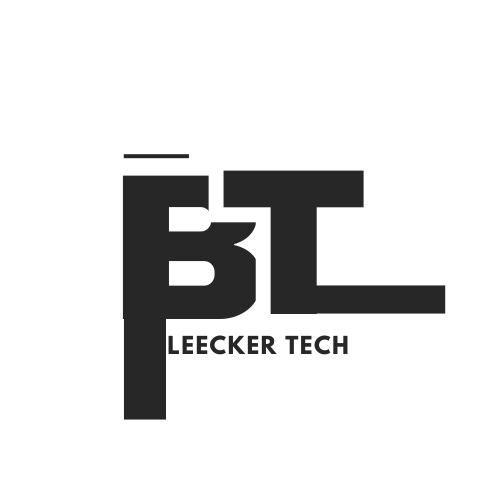Flexibility has become an imperative due to dynamics in business environment in today’s world. Meet the concept of the Agile Business Analyst (BA) – a new profession aimed at responding to business requirements and providing solutions in the context of agility.
It is evident that Agile methodology has become a widely accepted practice in the current business world and the role of an Agile Business Analyst is rather important to help a business remain Agile.
Understanding Agile Methodology
Overview of Agile Principles
Agile methodology is an approach based on the Agile Manifesto as well as on a specific set of principles. It focused on collaboration, communication with the customer and short successive deliveries of a fully functional and potentially ready software product. Agile principles are basically center on delivering working software in small, incremental releases, embracing change and focusing on the customer.
A Glimpse into Differences of Agile and Traditional Waterfall Business Models
As proven Agile differs from the Waterfall approach in which projects are carried out in strict phases in a lineal manner. It provides an opportunity to get feedback ad refine different aspects thereof, which can be particularly important in case of the project where requirements may change over time. This is the flexibility of Agile and this makes it for most organizations across the globe to adopt the system.
Business analyst’s role in an agile environment
Where Do Business Analysts Sit in Agile Environments?
In Agile environment, the Business Analyst is more than just a documenter of requirements as he or she contributes significantly to the success of the project. They engage with the other team members including the product owners, developers and many others so that they can easily transform the business requirements into useable user stories.
Skills Required for an Agile Business Analyst
Analytical and Problem-Solving Skills
The Agile BA must understand business problems and find solutions that work within an Agile environment. This involves de-composing complex activities into smaller, manageable user stories that teams can execute within a sprint.
Communication and Collaboration Skills
Since Agile implies cooperation of the team, an effective communication is obligatory. A good BA should be in a position to document business requirements and evidence in a way that is audible to others in the team both to technical persons and non-technical persons.
Awareness of agile tools and methods
An Agile BA must be conversant with Agile tools such as Jira, Trello, and Confluence among others. These tools assist in chronicling a project, especially where there are backlogs, and keeping every member of the team on a healthy strategic plane in relation to the projects goals.
Agile Business Analyst vs. Traditional Business Analyst
Comparing Roles and Responsibilities
Similarities are made on the basis of the fact that both positions require the person to assess business requirements. However, the position of the Agile BA is situated within a constantly changing environment. While the traditional BAs are associated with a number of well-defined phases. Agile BAs have to thrive when facing the environment characterized by high levels of uncertainty and frequent changes.
Transitioning from Traditional to Agile BA
Old style BA needs to accept the fact that Agile processes are iterative in nature when coming from BA background. This means embracing change, by prioritizing minor improvements, and spending more time with the development team.
The Agile Business Analyst’s Toolkit
Essential Tools for Agile BAs
An Iterative or Agile BA therefore, uses number of software and methodological tools also known as the Agile tool kit. There is no software that is more important than others but there are more significant. Such as Jira for backlog, Confluence for documentation and Slack for communication.
User Stories, Backlogs, and Sprints
Other duties include the maintaining and prioritizing the product backlog according to the business needs and working in cycles that are known as sprints so that continual value is created.
The Future of Agile Business Analysis
Emerging Trends and Technologies
Thus, we continue to see that the demands for the Agile BA are rapidly changing as technology advances further. AI, machine learning, or automation are already on the Agenda of every forward-leaning company and will be at the heart of the Agile business analysis of the future.
The Evolving Role of the Agile Business Analyst
It reveals that the Agile BA’s role is evolving to be more strategic with much focus on generating business value from technology prowess. The above evolution process will mean that BAs will have to refresh their understanding and knowledge from time to time and especially in relation to new trends in the market.
Best Practices for Agile Business Analysts
Continuous Learning and Improvement
First, there should be an embracing of the principle of lifelong learning with the Agile BAs in training themselves and updating their knowledge constantly. This might mean seeking out professional accreditation, going to seminars, or joining professional organisations.
Adapting to Changing Requirements
I would like to stress that Agile BAs should be ready to adapt, which would secure the project’s alignment with the business’s goals when those goals change.
Agile Certifications for Business Analysts
Popular Certifications and Their Benefits
Professional Agile BA certification includes CSPO or PMI-ACP and can help an Agile BA find new opportunities within the given profession.
How to Choose the Right Certification
Deciding the best certification to go for depends on one’s career needs as well as the requirements of his or her sector. Doing a research on the various programs in question and the advantages of each will enable one come up with a proper conclusion.
How to Become an Agile Business Analyst
Educational Pathways
The candidate must possess a good background in business analysis, project management or related discipline. It is important to note most of the Agile BAs are hired from business administration and Information technology experiences.
Gaining Experience in Agile Environments
There is no way around it: actually working in Agile environments is essential. This could involve, for example, doing Agile projects, attending Agile training or strictly observing other Agile BAs.
Conclusion
The operation of what is known as the Agile Business Analyst is extremely important in the modern emerging business world. By thus closing the gap that exists between business requirements and technology, Agile BAs guarantee that projects create value.
The use of Agile methodologies is constantly developing further thus the position of an Agile BA remains highly interesting and complex.
FAQs
1. What is the role of an Agile Business Analyst?
Agile Business Analyst supports Agile teams and helps communicate the business necessity in order to guarantee the desired IT solutions.
2. Looking at the Agile BA job description it becomes rather apparent, which skills are crucial in the role?
These include: analytical skills, good communication and interpersonal skills, ability to work in a team and knowledge of Agile tools and processes.
3. Barbara’s story – How a traditional Business Analyst can get to an Agile role?
A traditional BA may adopt Agile through reorientation if offered the chance through appropriate mindset and training; Agile is iterative, and the goal is to deliver continually.
4. What are the challenges faced by Agile Business Analysts?
Some of the issues may be; how to deal with evolving features, bloat and growing demand. Hence, a good communication system and ability to be flexible are some of the ways of addressing these challenges.



